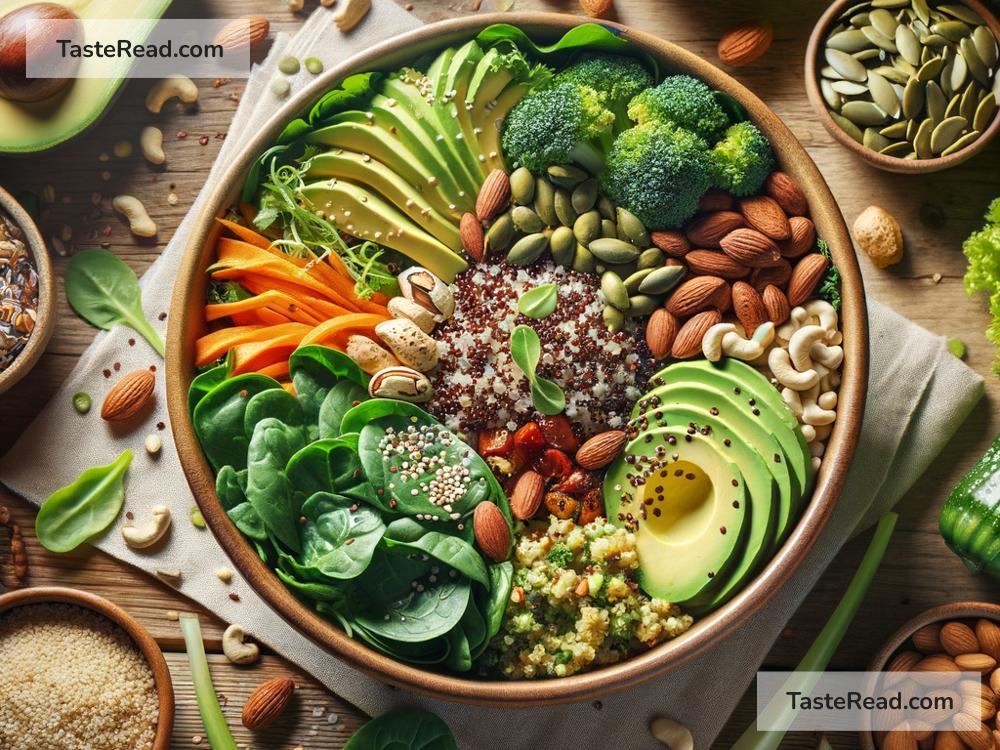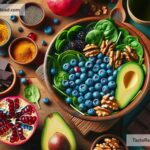How to Maximize Nutrient Density in Your Diet
Eating healthy doesn’t have to be complicated. One of the easiest ways to improve your diet is by focusing on nutrient density. Nutrient-dense foods give you the most vitamins, minerals, and other important nutrients for the fewest calories. They fuel your body and help it work at its best.
In this blog, we’ll explore what nutrient density means, why it’s important, and how you can make simple changes to maximize nutrient density in your meals. Let’s get started!
What Is Nutrient Density?
Nutrient density refers to how many nutrients (like vitamins, minerals, fiber, and antioxidants) are packed into a certain amount of food compared to the calories it provides. In other words, nutrient-dense foods give you a lot of good stuff without adding unnecessary calories.
For example, spinach is an extremely nutrient-dense food. It’s low in calories but rich in vitamin K, vitamin A, iron, and folate. On the other hand, candy or soda has a lot of calories but virtually no nutrients—those foods are considered “empty calories.”
Why Is Nutrient Density Important?
Eating more nutrient-dense foods is key to staying healthy. These foods give your body the fuel it needs to:
- Boost energy: Nutrients help your body convert food into energy, keeping you active and productive throughout the day.
- Support your immune system: Vitamins and minerals like vitamin C, zinc, and selenium protect you from getting sick.
- Improve overall health: Nutrient-dense foods can help lower the risk of chronic diseases like heart disease, diabetes, and high blood pressure.
- Maintain a healthy weight: Because they’re often low in calories and high in fiber, nutrient-dense foods can keep you feeling full and satisfied without overeating.
In short, when you focus on nutrient density, every bite you take works harder for your health.
10 Simple Tips to Maximize Nutrient Density in Your Diet
Here are some easy steps to help you make nutrient-packed choices every day:
1. Eat More Fruits and Vegetables
Fruits and veggies are some of the most nutrient-dense foods you can eat. They’re loaded with vitamins, minerals, antioxidants, and fiber. Aim to fill half your plate with colorful produce at each meal. The more variety, the better!
2. Choose Whole Grains
Instead of refined grains like white bread and pasta, go for whole grains like brown rice, quinoa, whole wheat bread, and oatmeal. They’re richer in fiber, vitamins, and minerals while keeping you fuller for longer.
3. Include Lean Proteins
Protein is essential for building and repairing tissues. Choose lean, nutrient-dense sources like chicken breast, fish, beans, tofu, eggs, and nuts. Plant-based proteins like lentils and chickpeas also come with added fiber and nutrients.
4. Limit Added Sugars
Foods and drinks high in added sugars offer little to no nutritional value. Swap sugary snacks for healthier alternatives like fresh fruit, yogurt, or popcorn. Water is also a much better choice than soda or energy drinks.
5. Go for Healthy Fats
Not all fats are bad! Healthy fats from foods like avocado, olive oil, nuts, seeds, and fatty fish (like salmon) provide essential nutrients like omega-3s, which support brain and heart health.
6. Cook at Home More Often
When you cook your own meals, you control what goes into your food. You can use fresh vegetables, lean proteins, and healthier cooking methods like baking, steaming, and grilling instead of deep frying.
7. Snack Smarter
Skip highly processed chips, cookies, and candy. Opt for nutrient-dense snacks like baby carrots with hummus, a handful of almonds, or sliced apples with peanut butter.
8. Hydrate with Water
Drinking water keeps your body functioning at its best. Instead of sugary drinks, choose water, herbal teas, or infused water with slices of lemon, cucumber, or berries for added flavor.
9. Read Food Labels
Be mindful of what you’re buying. Look at the nutrition facts and ingredients list to choose foods with minimal added sugars, preservatives, and unhealthy fats.
10. Add Superfoods to Your Diet
Superfoods like kale, spinach, blueberries, sweet potatoes, chia seeds, and turmeric are packed with nutrients. Including these in your meals can give your diet an extra boost.
Meal Ideas for a Nutrient-Dense Diet
Here are some quick and easy ways to put these tips into action:
- Breakfast: Start your day with oatmeal topped with fresh fruit, chia seeds, and a dollop of almond butter.
- Lunch: Build a colorful salad with mixed greens, roasted chickpeas, shredded carrots, grilled chicken, and olive oil dressing.
- Dinner: Try baked salmon with a side of quinoa and steamed broccoli.
- Snack: Enjoy yogurt with sliced bananas and a sprinkle of flaxseeds.
Final Thoughts
Maximizing nutrient density in your diet doesn’t mean you have to give up your favorite foods. Instead, it’s about making small, intentional choices to add more nutrient-rich ingredients and reduce empty calories. Over time, these changes can have a big impact on your energy levels, mood, and overall health.
Start slowly and make one or two upgrades to your meals this week. Whether it’s swapping white rice for quinoa or adding an extra serving of veggies to dinner, every step you take brings you closer to a healthier, nutrient-packed lifestyle.
So, what’s one nutrient-dense swap you’ll try today? Let us know in the comments below!


